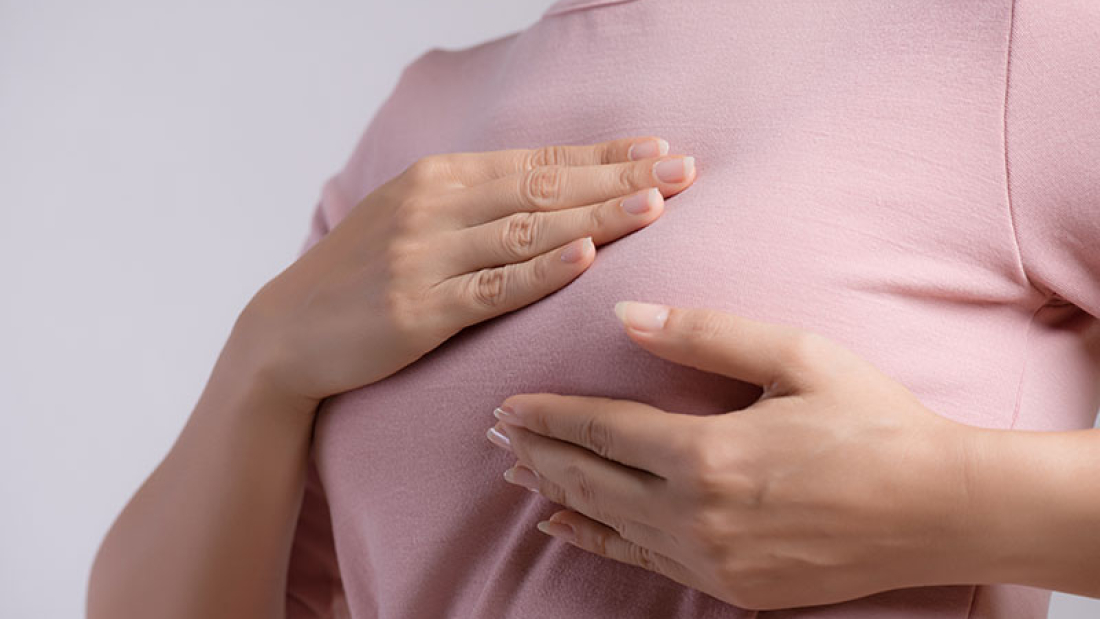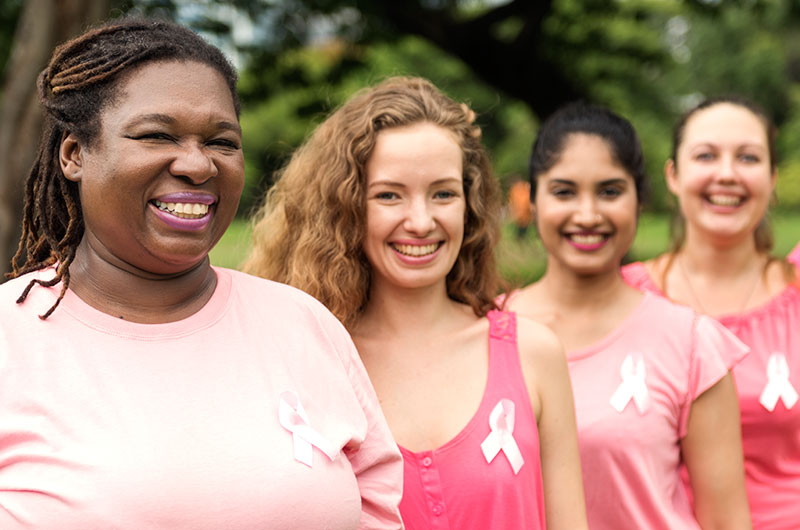Breast cancer touches the lives of many, and it’s a topic that can feel overwhelming. However, it’s also a subject where knowledge can be a powerful ally. Our aim is to make understanding breast cancer accessible, friendly, and informative through Breast Cancer Information and Discovery Questions.
Think of this resource as a conversation starter, a place where you can find answers to your questions about breast cancer in a warm and welcoming environment. We know that curiosity and a desire to learn can help ease the uncertainty that often comes with a breast cancer diagnosis or the concern for a loved one.
Our journey begins with the belief that knowledge empowers. From the basics of breast cancer to the latest discoveries in research and treatment, we’re here to provide insights in a friendly, easy-to-understand way. Whether you’re looking for information for yourself or to support someone you care about, our goal is to offer a helping hand on this journey of understanding.
Together, we explore, learn, and grow in our knowledge of breast cancer. By asking questions, seeking answers, and sharing our insights, we create a community of support and awareness. Through Breast Cancer Information and Discovery Questions, we hope to brighten the path toward a better understanding of breast cancer, ultimately leading to improved outcomes for all those touched by this condition.
How Long Can You Have Breast Cancer Without Knowing?
The length of time a person can have breast cancer without knowing it can vary significantly depending on several factors, including the type of breast cancer, its growth rate, and individual circumstances. In some cases, breast cancer can develop and grow slowly, and there may be no noticeable symptoms for a long time. In other cases, breast cancer can be more aggressive and progress more quickly, leading to symptoms and earlier detection.
Here are some factors to consider:
Type and Stage of Breast Cancer: The type and stage of breast cancer play a significant role in how long it can go undetected. Early-stage breast cancer, such as ductal carcinoma in situ (DCIS), may not cause noticeable symptoms and can be detected through routine screening mammograms. In contrast, advanced-stage breast cancer is more likely to cause symptoms and be detected sooner.
Regular Screening: Regular breast cancer screening, including mammograms and clinical breast exams, is essential for early detection. If a person is diligent about undergoing recommended screenings, it increases the likelihood of detecting breast cancer at an earlier, more treatable stage.
Symptoms: Some breast cancer symptoms, such as a lump or changes in the breast, can be noticeable. However, not all breast cancers present with obvious symptoms, especially in the early stages.
Risk Factors: Certain risk factors, such as a family history of breast cancer, genetic mutations (e.g., BRCA1 and BRCA2), and hormone replacement therapy, can increase the risk of breast cancer. People with higher risk factors may need more frequent screening and surveillance.
Individual Awareness: Some individuals may not be aware of the signs and symptoms of breast cancer or may delay seeking medical attention when they notice changes in their breasts. Education and awareness can play a crucial role in early detection.
In general, early detection is associated with better treatment outcomes and higher survival rates for breast cancer. It’s essential for individuals to be proactive about their breast health, engage in regular screenings as recommended by healthcare professionals, and seek medical attention if they notice any unusual changes in their breasts. If you have concerns about breast cancer, it’s always best to consult with a healthcare provider for personalized guidance and recommendations.
Why Breast Cancer is So Common?
Breast cancer is considered common for several reasons, including a combination of genetic, hormonal, environmental, and lifestyle factors. Here are some key factors contributing to the prevalence of breast cancer:
Gender and Age: Breast cancer can affect both women and, though less commonly, men. It is more common in women, and the risk of developing breast cancer increases with age. As the global population ages, the incidence of breast cancer naturally rises.
Hormonal Factors: Hormonal factors play a significant role in breast cancer. Women who have been exposed to estrogen and progesterone for a longer duration, such as those who started menstruating early, went through menopause later, or had hormone replacement therapy, may have a higher risk.
Genetic Predisposition: Certain genetic mutations, such as BRCA1 and BRCA2, are associated with an increased risk of breast cancer. Individuals with a family history of breast cancer or specific genetic mutations may be at higher risk.
Environmental Factors: Environmental factors, including exposure to certain chemicals and radiation, can contribute to the development of breast cancer. However, the exact impact of these factors can vary and is still being studied.
Lifestyle Choices: Lifestyle choices, such as diet, physical activity, and alcohol consumption, can influence breast cancer risk. A high-fat diet, excessive alcohol intake, and a sedentary lifestyle are associated with an increased risk.
Reproductive Factors: Certain reproductive factors, such as never having children or having a first child at a later age, can slightly increase the risk of breast cancer.
Hormone Replacement Therapy (HRT): Some studies have linked the use of hormone replacement therapy during menopause to an increased risk of breast cancer. The impact of HRT can vary depending on the type and duration of hormone therapy used.
Early Detection: Increased awareness of breast cancer and the availability of screening methods, such as mammograms and clinical breast exams, have led to earlier detection and diagnosis of breast cancer cases.
Improved Diagnosis: Advances in medical technology and diagnostic techniques have improved the ability to detect breast cancer at an earlier, often more treatable stage.
It’s important to note that while breast cancer is common, not everyone is at the same level of risk, and many cases can be prevented or detected early through lifestyle choices and regular screenings. Reducing risk factors, maintaining a healthy lifestyle, and undergoing recommended screenings can help lower the likelihood of developing breast cancer or lead to earlier, more effective treatment if it does occur.
What Can You Do to Avoid Breast Malignancy?
While there is no surefire way to completely prevent breast cancer, there are several steps you can take to reduce your risk and promote breast health. Here are some strategies:
Maintain a Healthy Lifestyle:
Eat a Balanced Diet: Focus on a diet rich in fruits, vegetables, whole grains, and lean protein sources. Limit the consumption of processed and high-fat foods.
Limit Alcohol: If you drink alcohol, do so in moderation. Excessive alcohol consumption is linked to an increased risk of breast cancer.
Stay Physically Active: Engage in regular physical activity. Aim for at least 150 minutes of moderate-intensity exercise or 75 minutes of vigorous-intensity exercise per week.
Control Your Weight:
Maintain a healthy weight through a combination of a balanced diet and regular exercise. Being overweight or obese can increase the risk of breast cancer, especially after menopause.
Breastfeed If Possible:
If you have children, consider breastfeeding. Breastfeeding may reduce the risk of breast cancer, and it also offers health benefits for both mother and baby.
Limit Hormone Replacement Therapy (HRT):
If you are considering hormone replacement therapy for menopausal symptoms, discuss the risks and benefits with your healthcare provider. HRT may slightly increase the risk of breast cancer.
Know Your Family History:
Understand your family’s medical history, especially regarding breast cancer. If you have a family history of the disease or known genetic mutations (e.g., BRCA1 and BRCA2), discuss your risk and screening options with a healthcare provider.
Undergo Regular Screenings:
Follow recommended breast cancer screening guidelines. Mammograms and clinical breast exams can help detect breast cancer at an early, more treatable stage.
Perform Breast Self-Exams:
Be familiar with how your breasts normally look and feel. Perform monthly breast self-exams and report any changes or abnormalities to your healthcare provider.
Minimize Environmental Exposures:
Limit exposure to environmental toxins and radiation when possible. This includes avoiding unnecessary radiation exposure and being cautious with certain chemicals and pollutants.
Manage Stress:
Chronic stress may affect overall health. Practice stress-reduction techniques, such as mindfulness, meditation, yoga, or counseling, to help manage stress levels.
Stay Informed:
Stay informed about breast cancer risk factors, prevention strategies, and advancements in screening and treatment. Knowledge empowers you to make informed decisions about your health.
Remember that breast cancer risk reduction strategies should be individualized based on your unique circumstances and risk factors. It’s essential to discuss your breast health and risk with a healthcare provider who can provide personalized guidance and screening recommendations. Regular check-ups and early detection remain key factors in improving breast cancer outcomes.
How Breast Cancer is Diagnosed?
Breast cancer can be diagnosed through a combination of screening tests and diagnostic procedures. The specific steps involved in diagnosing breast cancer typically include:
Breast Self-Exams (BSE): While not a diagnostic tool, regular breast self-exams can help individuals become familiar with their breast tissue and identify any changes or abnormalities. If you notice any changes, such as a lump, nipple discharge, or skin changes, it’s important to report them to your healthcare provider.
Clinical Breast Exam (CBE): During a clinical breast exam, a healthcare provider examines the breasts and surrounding areas for any lumps, changes in size or shape, or other abnormalities. This examination is typically performed by a doctor or nurse during a routine check-up.
Mammography: Mammography is an essential screening tool for breast cancer. It involves taking X-ray images (mammograms) of the breast tissue. Mammograms can often detect breast cancer at an early stage, even before symptoms are present. They are recommended for routine breast cancer screening, especially for women aged 40 and older.
Breast Ultrasound: If an abnormality is detected on a mammogram or during a clinical breast exam, a breast ultrasound may be performed. Ultrasound uses sound waves to create images of the breast tissue and can help determine if a lump is solid (possibly cancerous) or fluid-filled (likely a benign cyst).
Breast Biopsy: If a suspicious lump or area is found through any of the above methods, a breast biopsy is typically performed to confirm or rule out breast cancer. There are different types of breast biopsies, including:
Fine-Needle Aspiration (FNA): A thin needle is used to remove a small sample of cells from the lump or abnormal area.
Core Needle Biopsy: A larger needle is used to remove a small piece of tissue from the breast.
Surgical Biopsy (Excisional or Incisional): A surgeon removes the entire lump (excisional) or a portion of it (incisional) for examination.
Pathology and Lab Testing: The tissue or cell samples obtained during a biopsy are sent to a pathology laboratory for analysis. A pathologist examines the samples under a microscope to determine if cancer is present and, if so, what type and grade of cancer.
Imaging Tests: In some cases, additional imaging tests, such as breast MRI (magnetic resonance imaging), may be recommended to further evaluate the extent of the cancer and identify any additional areas of concern.
Once breast cancer is diagnosed, additional tests may be conducted to determine the stage of the cancer, which helps guide treatment decisions. These tests may include CT scans, bone scans, and other imaging studies.
It’s important to note that the diagnosis of breast cancer can be a complex process, and it often involves a multidisciplinary team of healthcare professionals, including radiologists, pathologists, surgeons, oncologists, and nurses, working together to provide the most accurate diagnosis and treatment plan for the individual. Early detection through regular screening and prompt follow-up with healthcare providers can significantly improve the prognosis for breast cancer.
How Breast Cancer Feels?
Breast cancer itself typically doesn’t have specific sensations or feelings. In its early stages, breast cancer often doesn’t cause any physical symptoms or discomfort. Many breast cancers are detected through routine screening, such as mammograms, before they cause noticeable changes in the breast.
However, as breast cancer advances or if it presents as a lump or mass, some individuals may notice certain physical changes or sensations in the breast. It’s important to remember that these symptoms can be caused by various conditions, not just breast cancer. Common sensations or changes associated with breast cancer may include:
Breast Lump: A lump or thickening in the breast or underarm area is one of the most common signs of breast cancer. Not all breast lumps are cancerous, but any new or unusual lump should be evaluated by a healthcare provider.
Breast Pain: Breast cancer is not usually painful in its early stages. However, some individuals may experience breast discomfort or pain, which can have various causes.
Nipple Changes: Changes in the nipple, such as nipple inversion (turning inward), discharge (other than breast milk), or skin changes around the nipple, should be investigated by a healthcare provider.
Breast Skin Changes: Breast cancer can cause changes in the skin, such as redness, dimpling (resembling an orange peel), or pitting. These changes can sometimes be noticeable on the breast’s surface.
Breast Swelling: Unexplained swelling of all or part of the breast can be a sign of breast cancer.
Breast Size or Shape Changes: Changes in breast size or shape that are not related to pregnancy or changes in weight should be evaluated.
It’s important to emphasize that the presence of these symptoms does not automatically mean a person has breast cancer. Many benign (non-cancerous) conditions can cause similar changes or sensations in the breast. However, if you notice any unusual breast changes, it’s essential to consult with a healthcare provider for a proper evaluation and, if necessary, further diagnostic testing. Early detection of breast cancer through regular breast self-exams, clinical breast exams, and mammograms remains a key factor in improving outcomes and treatment options.
Can Breast Malignancy Be Cured Without Surgery?
Breast cancer treatment typically involves a combination of therapies, and surgery is a crucial component of treatment for many individuals with breast cancer. The primary goal of surgery is to remove the cancerous tissue from the breast, evaluate lymph node involvement, and determine the stage of the cancer. In some cases, surgery may be curative on its own, especially for early-stage breast cancer.
However, it’s important to note that the approach to breast cancer treatment is highly individualized, and not all cases of breast cancer are treated with surgery. Depending on the type, stage, and characteristics of the cancer, as well as the individual’s overall health and preferences, other treatments may be considered as part of a comprehensive treatment plan. These treatments may include:
Radiation Therapy: Radiation therapy uses high-energy X-rays or other forms of radiation to target and destroy cancer cells. It is often used after surgery (e.g., lumpectomy) to reduce the risk of cancer recurrence in the breast area.
Chemotherapy: Chemotherapy involves the use of drugs to kill or slow the growth of cancer cells. It may be recommended before or after surgery, depending on the type and stage of breast cancer. Chemotherapy is particularly beneficial for cancers that have a higher risk of spreading to other parts of the body.
Hormone Therapy: Hormone therapy is used for hormone receptor-positive breast cancers. It works by blocking the effects of hormones (such as estrogen or progesterone) that can promote the growth of cancer cells. Hormone therapy may be used as an adjuvant treatment following surgery or as the primary treatment for certain cases.
Targeted Therapy: Targeted therapy drugs specifically target proteins or other molecules involved in the growth and spread of cancer cells. They are used in conjunction with other treatments for certain types of breast cancer.
Immunotherapy: Immunotherapy is an emerging treatment option for some breast cancers. It helps the immune system recognize and attack cancer cells. While not a primary treatment for breast cancer, it may be used in clinical trials or for specific cases.
Breast Cancer Information serves as a vital resource in our collective journey to understand and address the challenges posed by breast cancer. This comprehensive resource embodies the spirit of empowerment through knowledge, providing a wellspring of insights, guidance, and support for individuals, caregivers, and healthcare professionals.
Throughout our exploration of breast cancer, we have uncovered essential information about risk factors, screening, diagnosis, treatment options, and survivorship. This knowledge equips us with the tools needed to make informed decisions, promote awareness, and advocate for improved breast health.
Our quest for understanding doesn’t end here; it’s a continuous journey. Breast Cancer Information reminds us that by asking questions, seeking answers, and sharing our insights, we create a supportive community dedicated to combating breast cancer. Through education and awareness, we work towards a world where early detection is the norm, treatment is more effective, and lives are saved.
As we navigate the complexities of breast cancer, let us remember that knowledge is a beacon of hope. Together, we can shine a light on this disease, offering support and guidance to those affected, and paving the way for a brighter, healthier future for all.
Brought to you by Fomat Medical



